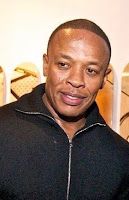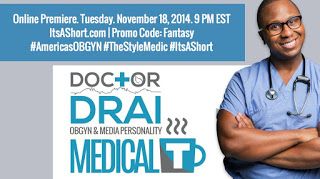The Board dismissed this opposition to registration of the mark DR. DRAI, in standard character form, and the word + design mark shown immediately below, for educational, entertainment, and consulting services, and audio books and electronic publications, in the field of women's and men's health. Opposer Andre Young claimed a likelihood of confusion with his registered mark DR. DRE for musical sound recordings and entertainment services, as well as false association under Section 2(a). Although the Board found the marks to be more similar than dissimilar, Opposer failed to provide any evidence that the goods/services are related, and failed to prove that consumers would presume a connection between applicant's goods and services and Dr. Dre. Andre Young v. Draion M. Burch DO, Oppositions Nos. 91224580 and 91226572 (May 3, 2018) [not precedential]. (Opinion by Judge Cheryl S. Goodman).

Evidentiary issues: The Board first dealt with a number of evidentiary issues. For example, it overruled a hearsay objection to certain publication on the ground that they were more than twenty years old and therefore fell within the exception of FRE 803(16). The Board took judicial notice of certain definitions from the Merriam-Webster Online Dictionary, but refused to do so for excerpts from Wikipedia and the Urban Dictionary because those websites have no counterpart print editions and are collaborative sources.
Likelihood of Confusion: Although the marks DR. DRE and DR. DRAI differ in spelling, they are "phonetic equivalents and are capable of being pronounced so as to sound similar," and both have the connotation of a name. As to applicant's word + design mark, DOCTOR DREI is the dominant portion portion and, like DR. DREI, is the phonetic equivalent of DR. DRE and has the same connotation.

Dr. Dre
Turning to the fifth du Pont factor, the strength of opposer's mark, the Board found DR. DRE to be inherently distinctive, but as to commercial strength there was no evidence of sales or advertising expenditures by opposer. Much of opposer's evidence was hearsay, but the record did show significant public exposure of DR. DRE as a result of widespread media attention. The Board found that the DR. DRE mark "has achieved a degree of renown in the music field and is strong."
There was no evidence of significant third-party use of Dr./Doctor marks, Dre marks, or Dr. Dre marks in opposer's field that would weaken the DR. DRE mark vis-a-vis its scope of protection. DR. DRE is a strong mark, but its strength does not reach the level "fame" for Section 2(d) purposes.
Turning to the goods and services, Opposer feebly argued that applicant's services are related to those of opposer due to the entertainment nature of both. The Board, however, found no evidence that the involved services are related. Opposer asserted that because well-known persons often license use of their names for various goods and services, consumers would consider applicant's services as being licensed by opposer. But there was no evidence that opposer has done any licensing, nor that applicant's goods and services are of a type for which owners of merchandising marks would license their marks.
The Board accorded very little weight to the fact that both applicant and opposer offer their services through the same channels of trade: television, radio, and social media. The Board noted that, although applicant's and opposer's services are costly, their sound recordings, audio books, and electronic publication may be purchased with less care, a factor that favored opposer.
Weighing the relevant du Pont factors, the Board concluded that there is no likelihood of confusion, and so it dismissed opposer's Section 2(d) claim.

False Suggestion of a Connection: The Board found that "Dr. Dre" is a name or identity of opposer and that applicant's marks are a close approximation of "Dr. Dre." It also found that "Dr. Dre" has come to be associated with and refers uniquely to opposer. There was no actual connection between applicant and opposer such that applicant would be entitled to use its marks. Opposer established that the name "Dr. Dre" is well-known. The question, then, was this:
whether consumers of Applicant's motivational and educational speaking services or goods and services relating to the subject areas of osteopathic medicine, obstetrics and gynecology, and men's and women's health would think only of the well-known Dr. Dre name when the marks DR. DRAI and [the logo mark] are used on or in connection therewith. We do not require proof that the name Dr. Dre is famous in the health or medical field or even that he offers goods or services in these fields. *** Rather, the question is whether Opposer's reputation as a musician and producer is of such a nature that when Applicant's DR. DRAI marks are used in connection with its applied-for goods and service consumers will understand the mark to refer to Dr. Dre.
The Board again pointed out there was no evidence that opposer has done any licensing, nor any evidence that it is commonplace for celebrities to sell or license the goods or services of the type provided by applicant. In short, there was no evidence that, due to opposer's reputation in the music industry, consumers would presume a connection with Applicant's educational and motivational speaking services or its medical and health care products and services when applicant's DR. DRAI marks are used on such goods and services.
Finally, there was no evidence that applicant intended to trade on the goodwill associated with opposer's name. Applicant's principal testified that "Dr. Drai" is his nickname and that he would not want to be associated with Dr. Dre because "it's a bad reflection on me as a doctor."
And so the Board dismissed opposer's Section 2(a) claim.
The content of this article is intended to provide a general guide to the subject matter. Specialist advice should be sought about your specific circumstances.
